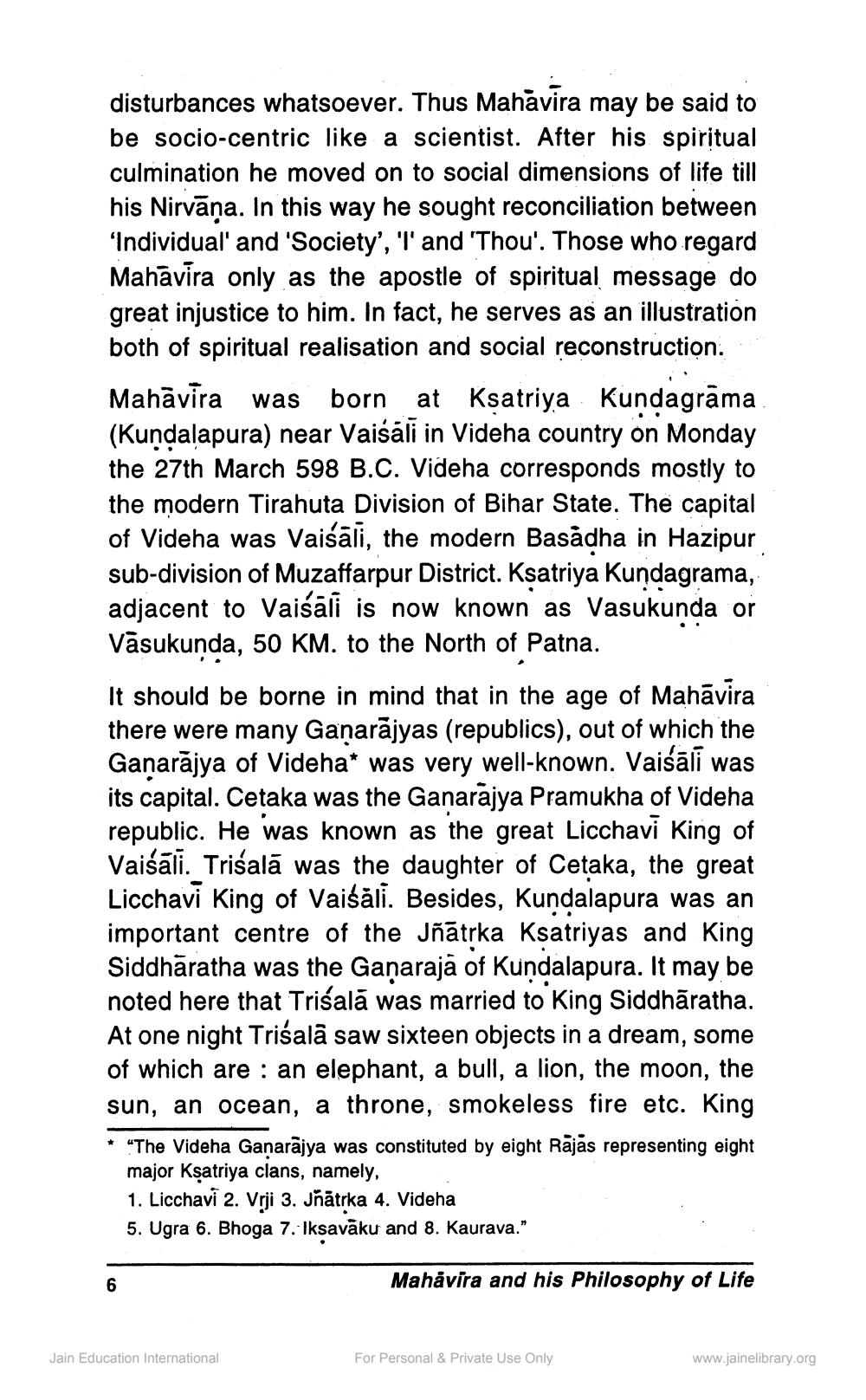________________
disturbances whatsoever. Thus Mahavira may be said to be socio-centric like a scientist. After his spiritual culmination he moved on to social dimensions of life till his Nirvāna. In this way he sought reconciliation between 'Individual' and 'Society', 'T' and 'Thou'. Those who regard Mahavira only as the apostle of spiritual message do great injustice to him. In fact, he serves as an illustration both of spiritual realisation and social reconstruction. Mahāvira was born at Ksatriya Kundagrāma. (Kundalapura) near Vaisali in Videha country on Monday the 27th March 598 B.C. Videha corresponds mostly to the modern Tirahuta Division of Bihar State. The capital of Videha was Vaisāli, the modern Basādha in Hazipur sub-division of Muzaffarpur District. Ksatriya Kundagrama, adjacent to Vaisāli is now known as Vasukunda or Vāsukunda, 50 KM. to the North of Patna. It should be borne in mind that in the age of Mahāvira there were many Ganarājyas (republics), out of which the Ganarājya of Videha* was very well-known. Vaiśāli was its capital. Cetaka was the Ganarajya Pramukha of Videha republic. He was known as the great Licchavi King of Vaiśāli. Trisalā was the daughter of Cetaka, the great Licchavi King of Vaiśăli. Besides, Kundalapura was an important centre of the Jñātrka Ksatriyas and King Siddhāratha was the Ganarajā of Kundalapura. It may be noted here that Trisalā was married to King Siddhāratha. At one night Trišala saw sixteen objects in a dream, some of which are : an elephant, a bull, a lion, the moon, the sun, an ocean, a throne, smokeless fire etc. King
"The Videha Ganarājya was constituted by eight Rājas representing eight major Ksatriya clans, namely, 1. Licchavi 2. Vrji 3. jñātrka 4. Videha 5. Ugra 6. Bhoga 7. Iksavāku and 8. Kaurava."
Mahåvira and his Philosophy of Life
Jain Education International
For Personal & Private Use Only
www.jainelibrary.org




